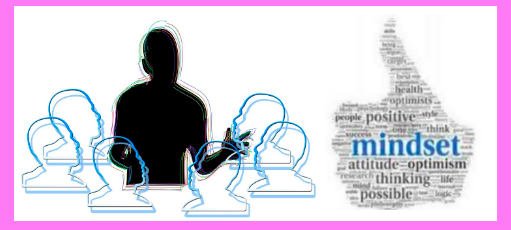


Establish clarity about curricular essentials
- identify skills and ideas that make up enduring understandings and enabling support skills
- curriculum based on important concepts is more likely to be relevant and engaging to learners
- work to ensure that all learners own powerful learning goals
- General strategies:
- Start unit with pre-assessments of upcoming learning targets and precursor skills
- Use ongoing formative assessments to finetune assignments
- Provide enrichment activities to advanced students that align to learning targets
- Use common learning targets to communicate the power of the agenda and each students’ ability to contribute to it
- Design curriculum around powerful ideas that reveal how the discipline works
- Use flexible entry points to enduring understandings
- Offer options to enduring understandings for different students to explore and access learning
Accept responsibility for learner success
- accept the reality that if a student didn’t learn something important, it wasn’t taught well enough
- believe that all students have potential and worth
- General strategies:
- Promote a classroom environment with shared teacher-student responsibility for learning
- Do not let gender, low SES, race, past achievement etc, become excuses for shoddy work or for achieving less than what students can accomplish
- Get to know each student to learn how to teach her more effectively
- Track progress of student against key learning targets
- Find alternative ways of teaching to ensure wider access to content
- Send consistent messages to students that if something didn’t work today, we’ll try something new tomorrow
- Provide support systems that model what quality work looks like and what it takes to produce quality work
Develop Communities of Respect
- Create safe environments where all teachers and students are respected
- General strategies:
- Promote behaviors that support, not undermine, positive learning environments. Read about principles of complex instruction (i.e. good grouping learning) in this article for more ideas.
- Do not let a small group of students dominate classroom conversations
- Call on ALL students during classroom conversations. See here for more creative ideas to accomplish this.
- Design tasks that enable all students to make meaningful contributions to the group. For ideas on how to do this in math, check out this article on Rich Mathematical Tasks.
- Ensure that varied perspectives and backgrounds emerge in important parts of work
- Help students reflect on the quality of their contributions to the community
- Seek out, respond to, and use students’ ideas on how to foster more respect in the classroom
Build Awareness of What Works for Each Student:
- Act as hunter/gatherers of many learning strategies who value what each strategy may offer to students
- General strategies:
- Create opportunities to meet individually with students
- Gather information on students’ interests, preferences, dreams, etc
- Work to understand students’ strengths and challenges
- Learn students’ learning profiles
- Observe students in different contexts (alone, small group, large group) to see which contexts better facilitate learning
- Create opportunities to learn from parents, community members and other teachers about students
For more essential skills and attitudes go to: 28: Responsive Teaching: Essential Skills & Attitudes 2 of 2

Knowing the skills and attitudes that support responsive teaching can help teachers evaluate their own beliefs and skill sets in order to develop better attitudes and strategies. The idea that ALL students can succeed is not new, but is easier said than done. The more strategies one knows, the better one can prepare to meet the challenges of facilitating learning for students with varied interests, varied learning profiles, and varied levels of non-school support.

Preparation Steps
- Analyze standards in upcoming project. Categorize them into enduring understandings and key enabling skills.
- Conduct activities that help students identify and share their preferred learning modes and interests
- Research and gather resources for multiple ways to teach learning targets.
- Brainstorm flexible entry points towards key understandings and towards products. One strategy for this is differentiated curriculum charts.
- Research and commit to a research model for evaluating lesson plan design & implementation
- Implement and learn from a pre-assessment at the start of a project on upcoming learning targets and prerequisite skills
Early Implementation Steps
- Allow students to choose from flexible entry points to key understandings and products
- Implement lesson plans that appeal to multiple learning modes
- Observe students in order to learn what activities and contexts enhance their learning
- Record observations of students and of lesson plan details that can teach one how to fine tune lessons and improve later lesson plan designs
- Create opportunities for students to learn in small groups within workshops that match their learning needs
- Use regular formative assessments to give students’ feedback to improve their understanding and products and to fine tune lesson plans
- Call on ALL students during classroom conversations
- Track how student learning is approaching learning targets
Advanced Implementation Steps
- Let students choose from a menu of activities and assignments to learn new content and display mastery. See differentiated curriculum charts.
- Have students regularly journal on the strategies they are using to learn new concepts and what factors are enhancing and hindering their learning.
- Provide enrichment activities to advanced students.
- Call all parents to learn about students interests and quirks related to learning.
- Design and implement group roles that assign meaningful tasks to all group members. See this article for tips on teaching collaborative learning skills.
- Seek out and implement student advice on how to improve classroom culture.

